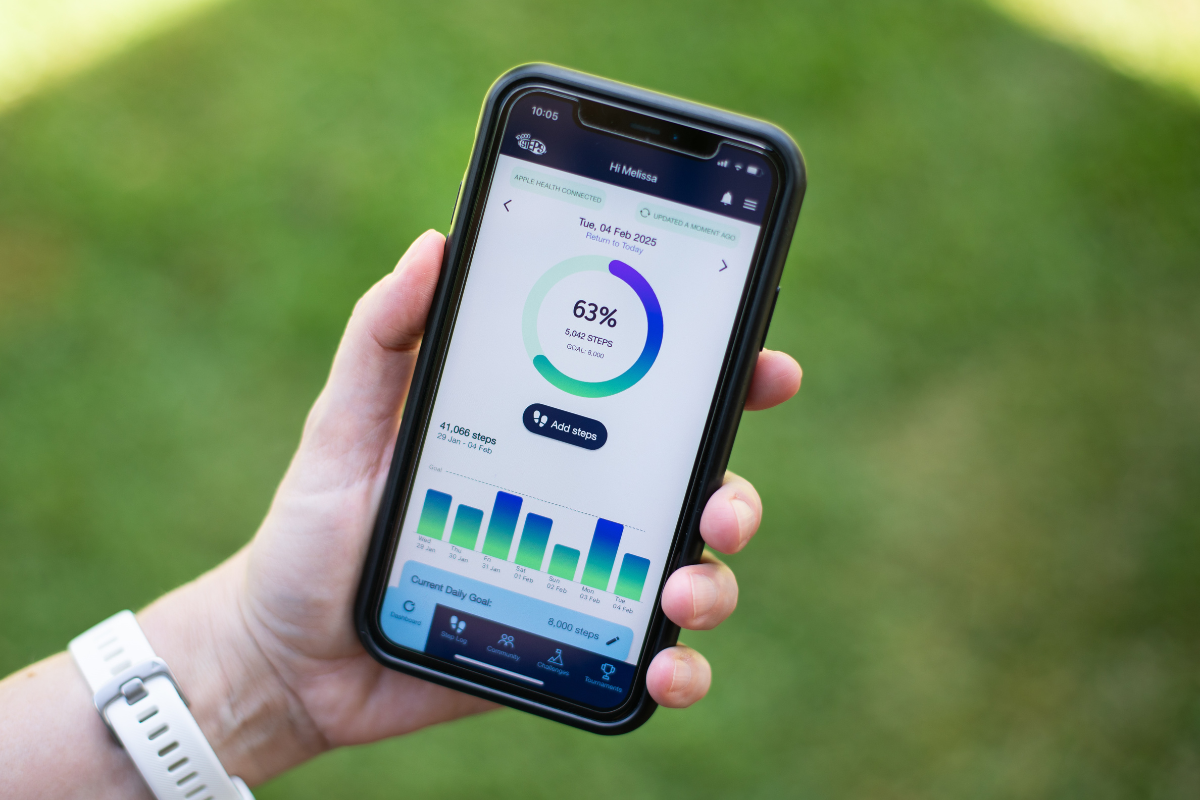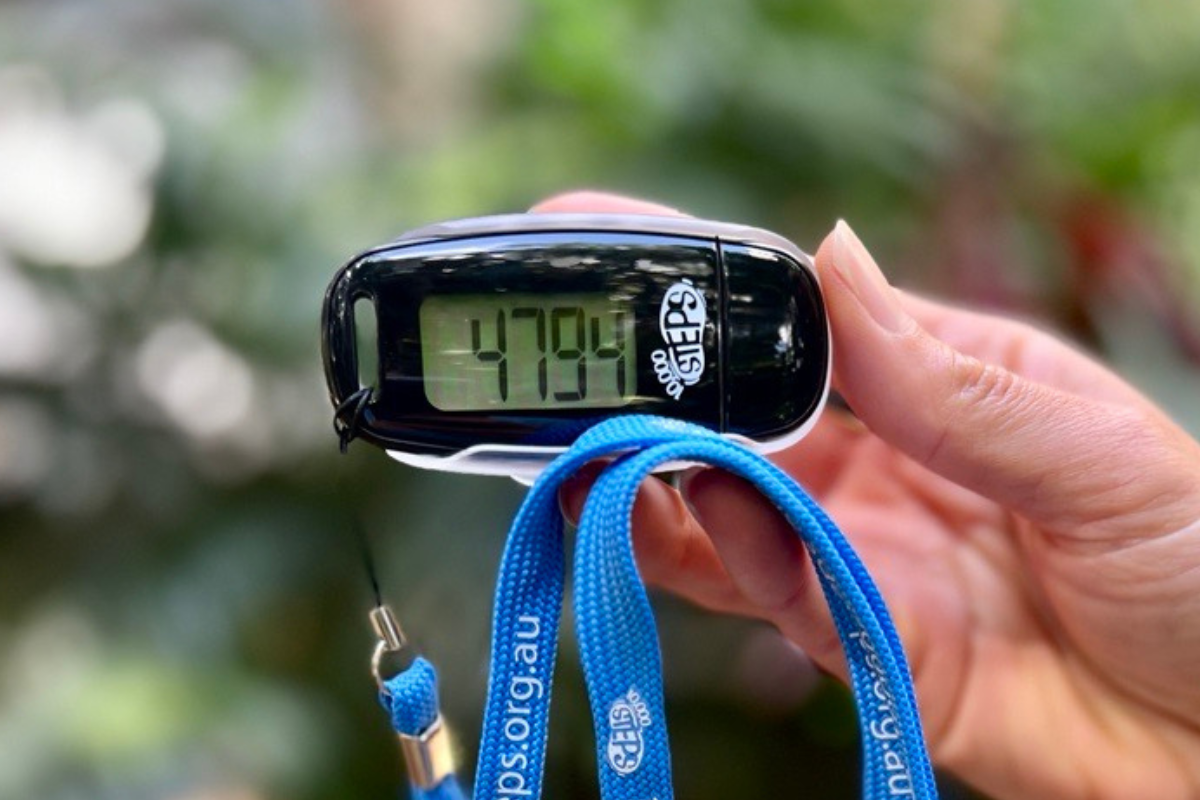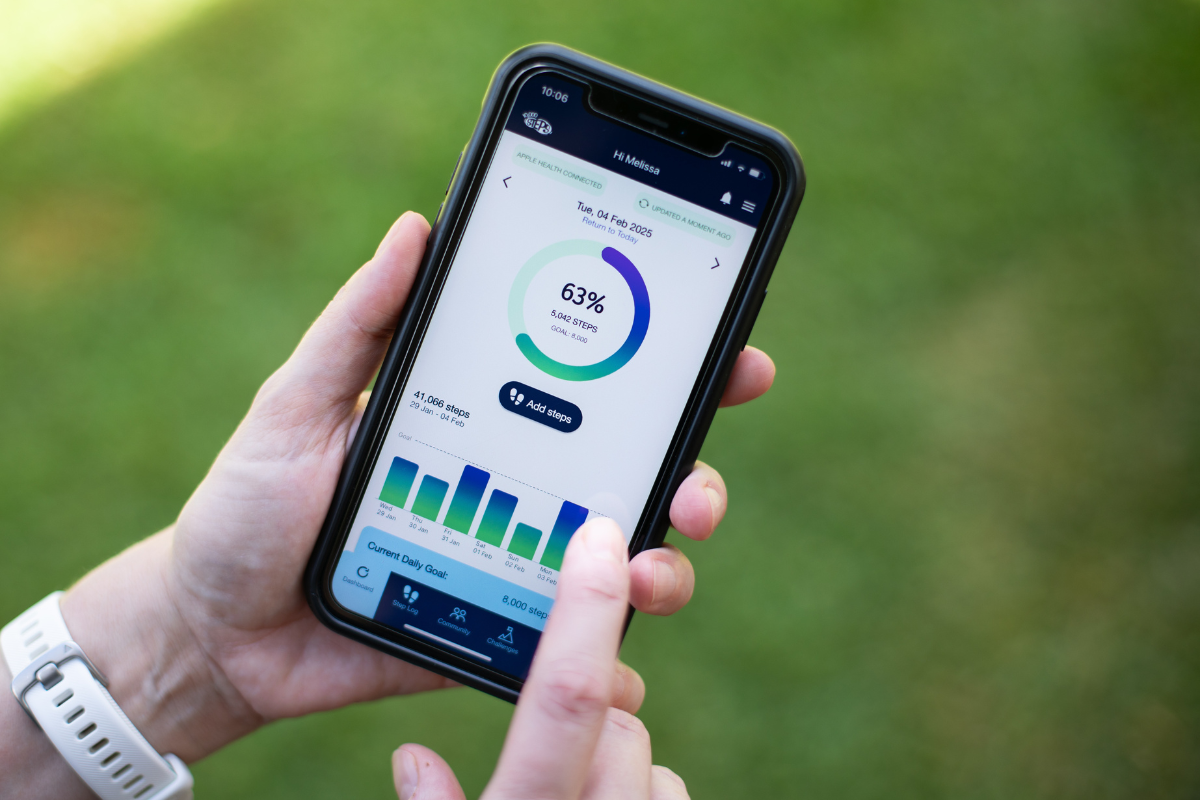10,000 steps is the recommended daily step target for healthy adults, but it might not be right for you! Depending on your current activity level, we recommend monitoring your activity and setting your own personal step goal. Setting your own goal is a great way to increase your motivation for active choices throughout your day. Tracking your physical activity with 10,000 Steps can help you to stay motivated to increase your activity levels!

Why use 10,000 Steps for your activity tracking?
Join 10,000 Steps to track your activity in one central place - no matter which step tracking device you use. Switch devices without losing your history, join step challenges, and connect with a community all in one place.
Choosing an Activity Tracker
There are a range of activity trackers available on the market. You may already have one in your pocket!
Wrist Worn Trackers
Most wrist worn physical activity trackers can track steps. Many can also convert steps into additional measures, including the distance covered or the number of calories burned. Many wrist worn trackers share their data with mobile applications (apps) to provide insight into individual physical activity behaviour over a period of time.
10,000 Steps includes app-based syncing for all wrist-worn activity trackers that are compatible with Apple Health or Android Health Connect. We also have web-based syncing for Garmin, Google Fit, and Fitbit online accounts. Check your syncing options here.

Pedometers
A pedometer is a portable, user-friendly device that counts steps by detecting motion. These are very accurate when used correctly. Some pedometers need to be clipped to your belt, pants or skirt just above the hip in line with the knee. New digital pedometers can be worn on the hip, in your pocket, or around your neck.
Pedometers are a great low-cost option for organisations, and for people who do not have consistent access to smartphones or wrist worn trackers. Find out more about our new 10,000 Steps digital USB pedometers here.

Smartphones
Many smart phones can now track steps themselves with inbuilt accelerometers. Well-known brands like Apple iPhones come pre-installed with apps that allow you to view your steps.
Smartphone tracking can be less accurate than other trackers, especially if you don't carry your phone in your hip pocket. However, smartphones offer the benefit of being a great start to step tracking with a device that many people already own.
The Benefits of Monitoring Your Physical Activity
With continual advances in technology and our lives and workplaces becoming more sedentary, it now takes a concerted effort to make active choices. We can all make the effort to move more in small ways across the day, by parking further from the entrance to shops, taking stairs instead of escalators, standing while at work, and walking to socialise with friends and family.
Activity trackers provide data which enables you to become aware of your physical activity levels, work towards a goal and monitor progress. Studies using the 10,000 steps per day goal have shown weight loss, improved glucose tolerance, and reduced blood pressure from increased physical activity toward achieving this goal.
The following pedometer indices have been developed to provide a guideline on steps and activity levels:
- Sedentary is less than 5,000 steps per day
- Low active is 5,000 to 7,499 steps per day
- Somewhat active is 7,500 to 9,999 steps per day
- Active is more than 10,000 steps per day
- Highly active is more than 12,500 steps per day
Although the program promotes the goal of reaching 10,000 steps each day for healthy adults, this goal is not universally appropriate across all ages and physical function. There are some groups where the goal of 10,000 steps may not be accurate, such as the elderly and children.
Your individual step goal should be based on your current activity levels and overall health and fitness goals. For people who normally do fewer than 10,000 steps, increasing daily activity by 1-2,000 steps per day will provide health benefits over time.
Combining Two Recommendations
For healthy adults, the goal of reaching 10,000 steps each day is encouraged alongside the Australian Physical Activity and Sedentary Behaviour Guidelines.
Many adults struggle to reach 10,000 steps without also doing some form of planned moderate activity. Active choices can be made throughout the day, which can be easier than attempting 10,000 steps in one session.
Thirty minutes of moderate physical activity such as walking, is approximately 3,000 - 4,000 steps. By combining both the goal of 10,000 steps each day and 30 minutes of moderate activity as recommended in the Australian Physical Activity and Sedentary Behaviour Guidelines, we are more likely to reach a physical activity level associated with health benefits.
Remember one of the main points from the Guidelines. Doing something is better than nothing. Doing more is better again!
At 10,000 Steps, our slogan for members focused on step goals is every step counts. Physical activity looks different for everyone. With 10,000 Steps, you can track steps, minutes of activity, or both - whatever works best for you. Whether it’s a walk, a swim, a workout, gardening, or anything in between, every move counts.
Always consult with a doctor or healthcare professional before commencing a physical activity program.

Australia’s Physical Activity & Sedentary Behaviour Guidelines for Young People (13-17 Years)

Australia’s Physical Activity & Sedentary Behaviour Guidelines for Adults (18-64 Years)
